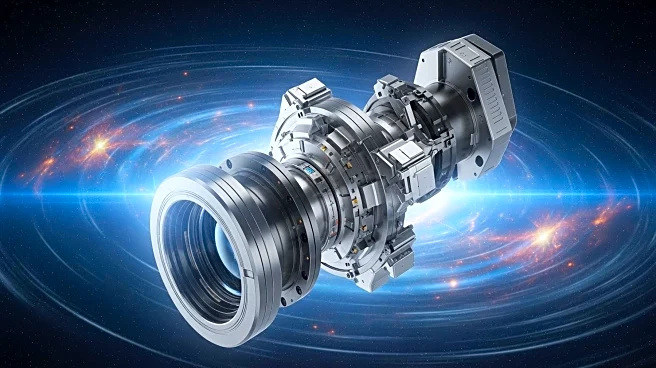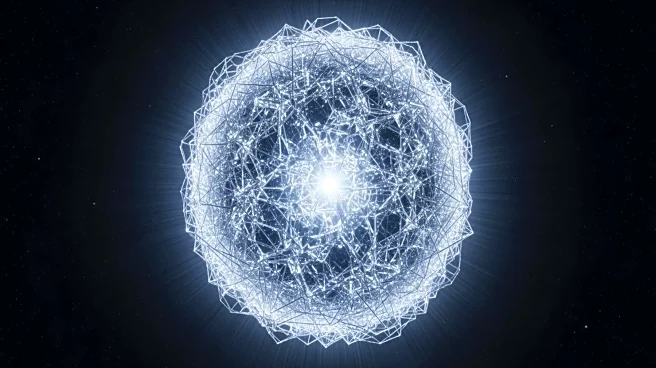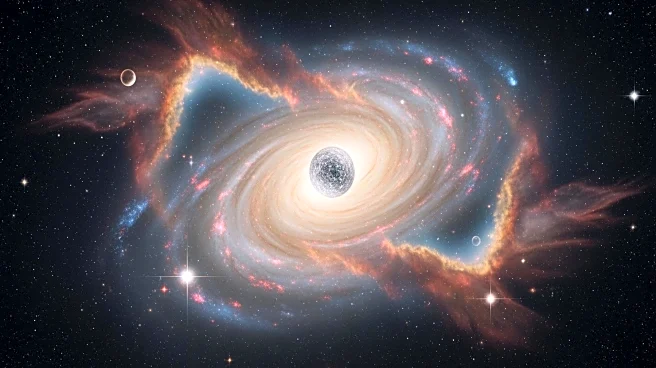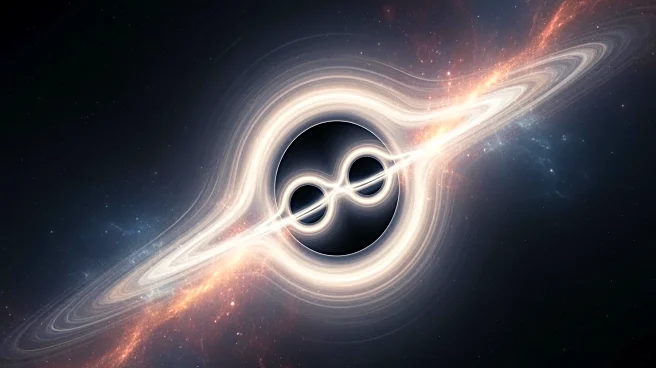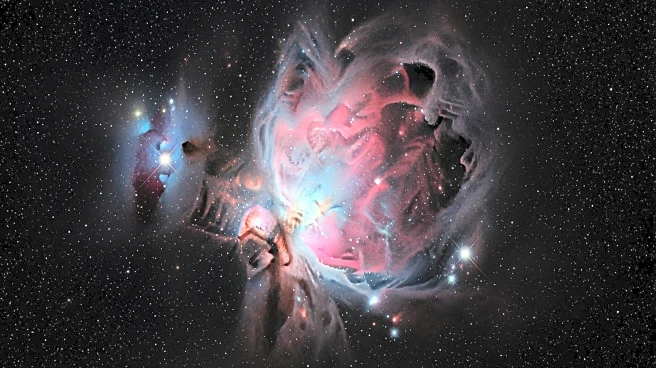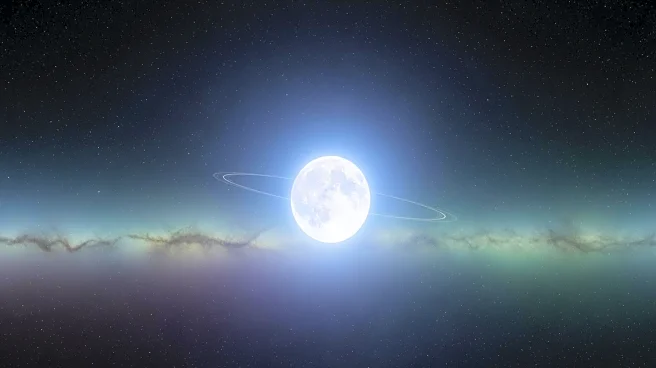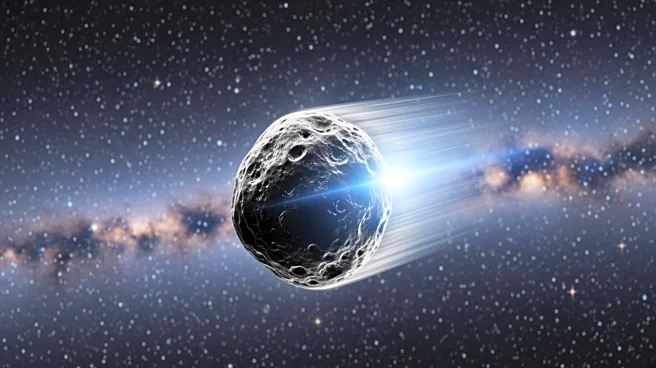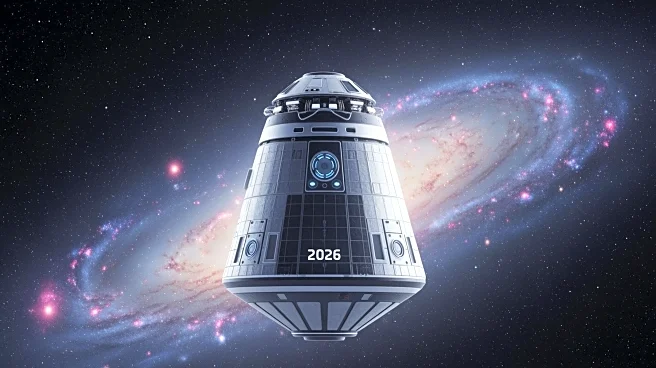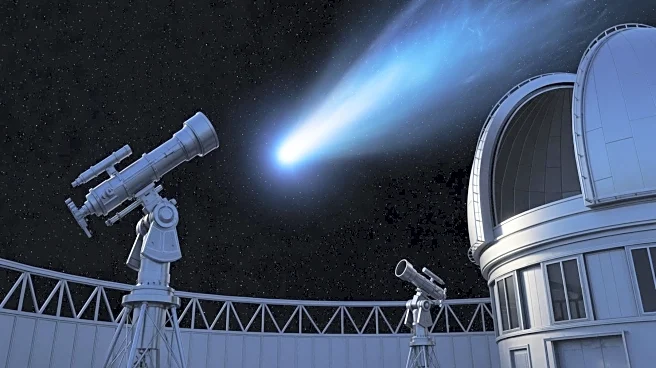What's Happening?
Researchers have developed a new theoretical model to better understand the compactness of neutron stars, which are the remnants of massive stars that have undergone supernova explosions. These stars are incredibly
dense, with a mass up to three times that of the sun compressed into a small volume. The study, conducted by Luciano Rezzolla and Christian Ecker from the University of Frankfurt, aims to clarify the properties of neutron stars by examining the equation of state, which describes the density and pressure within these stars. The researchers found that the ratio of a neutron star's mass to its radius is always smaller than 1/3, providing a new way to estimate the star's radius based on its mass.
Why It's Important?
This development is significant as it advances the understanding of nuclear physics under extreme conditions, which cannot be replicated on Earth. Neutron stars are key to studying the fundamental forces of nature, such as quantum chromodynamics (QCD), which describes how quarks and gluons interact. The findings could lead to more accurate models of neutron stars, impacting astrophysics and potentially leading to new insights into the behavior of matter at nuclear densities. This research could also influence future observations and experiments, such as those conducted by the NICER experiment on the International Space Station, which aims to measure neutron star properties more precisely.
What's Next?
Future observations, particularly of gravitational wave events involving neutron stars, could provide further data to test and refine the new model. The researchers are optimistic that more events like the GW 170817 merger, which involved two neutron stars, will help set tighter constraints on neutron star radii. Such data could validate or challenge the current understanding of QCD and the internal structure of neutron stars, potentially leading to breakthroughs in theoretical physics.
Beyond the Headlines
The study highlights the challenges of measuring neutron star properties due to their extreme conditions and distance from Earth. The research underscores the importance of theoretical models in advancing knowledge where direct experimentation is not possible. It also illustrates the interconnectedness of different fields of physics, as insights from quantum chromodynamics are applied to astrophysical phenomena.
